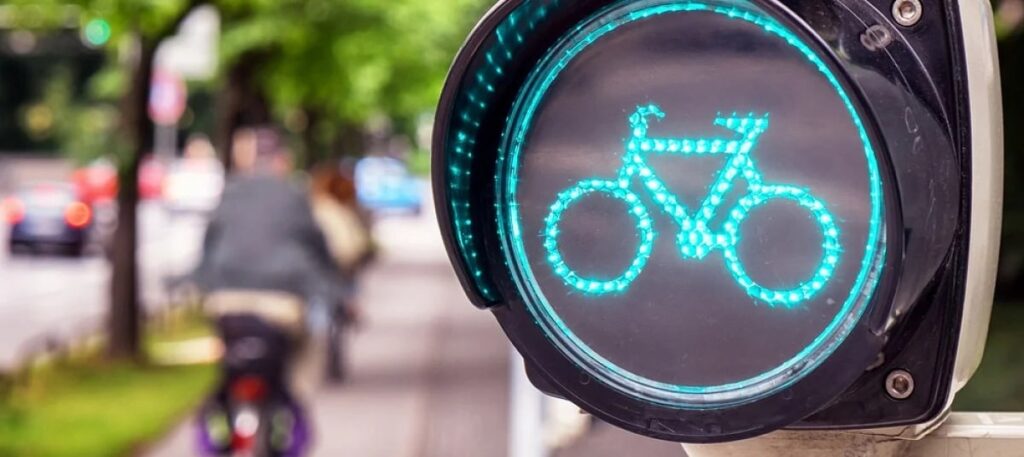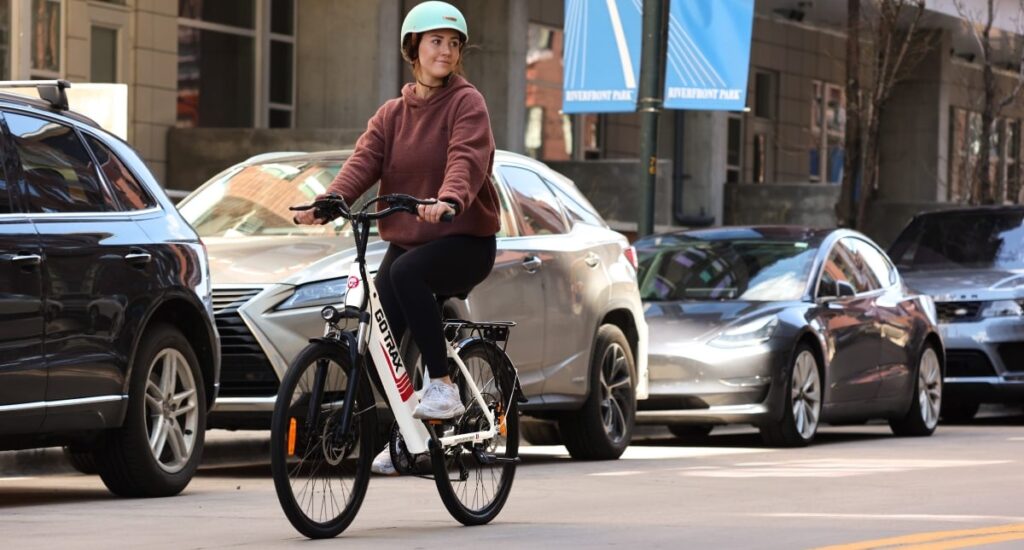
With the start of the new year, a number of new laws go into effect. We’ve selected the most significant ones affecting pedestrians, motorists, and cyclists from the California Highway Patrol’s review of new transportation laws:
Increasing Visibility Around Crosswalks (AB 413): Vehicles are prohibited from stopping or parking a vehicle within 20 feet of an intersection or crosswalk, or within 15 feet of any crosswalk where a curb extension is present. The law is intended to increase visibility for all road users to see oncoming traffic.
Cyclists Crossing with Bicycle or Pedestrian Signals (AB 1909): Whenever a traffic signal with different colored bicycle symbols exists in the same location as traffic signals for cars or pedestrians, a cyclist must obey the bicycle traffic signal. If no bicycle traffic signal is present, cyclists are allowed to cross when the pedestrian walk signal is lit, even if the traffic signal for cars is red.

Speed Camera Pilot Program (AB 645): As part of a five-year pilot program, Oakland and San Francisco can install a limited number of speed cameras on local streets where there are safety concerns. The cameras will automatically take a picture of a speeding car’s license plate and deliver a notice of violation to the registered owner through the mail.
Crackdown on Catalytic Converter Theft (SB 55): To help combat theft, motor vehicle dealers are required to ensure a catalytic converter has been permanently marked with a vehicle’s identification number (VIN) before selling that vehicle.
Traffic Stops (AB 2773): Requires a peace officer making a traffic or pedestrian stop to state the reason for the stop before asking any questions.
Driver’s Licenses Can No Longer Be Impounded (AB 1125): Courts no longer have the authority to impound a person’s driver’s license if they fail to make payments for bail or a fine. The law is intended to reduce the harm caused to people with low incomes who need to drive to work or access essential services.
To read more on these and other new transportation laws, read the California Highway Patrol press release.
Additional Reading:
New California Transportation Laws for 2023


